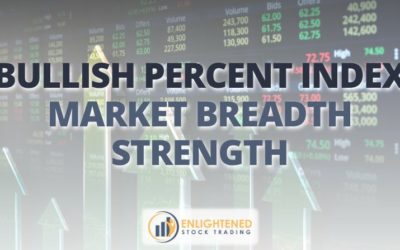The Bullish Percent Index (BPI) is a trading indicator that measures the percentage of stocks exhibiting Point & Figure (P&F) Buy Signals. This valuable tool helps traders assess a market’s internal health, providing insights beyond just market movement and price fluctuations. A high BPI indicates that most stocks in an index are following bullish patterns, while a low BPI suggests broad...
Adrian Reid

How to Use the Gann Fan in Systematic Trading
The Gann Fan is a trading indicator developed by W.D. Gann, a legendary and 20th-century market theorist who believed that movements in price follow geometric angles. The fan consists of multiple angled lines drawn from a key price high or low, helping traders visualize trend reversals, support and resistance levels, trend direction, and potential price targets. Unlike traditional trend lines,...
Conservatism Bias in Trading: The Hidden Risk of Ignoring New Data
Conservatism Bias in Trading is one of the most insidious cognitive biases that stock traders fall into. In simple terms, it’s the tendency to cling to old beliefs and underweight new evidence, even when that new information could dramatically improve investment decisions—a common trap explored in trading psychology. Research has shown that behavioral biases, including conservatism bias,...
Break Free from Authority Bias in Trading & Make Independent Decisions
Have you ever made an investment decision simply because an expert, a famous investor, or a financial guru said it was a good idea? If so, you’ve fallen victim to authority bias, a common cognitive bias in financial markets. This bias is natural and widely studied in trading psychology, because from the moment we’re born, we’re taught to listen to authority. As kids, we trust our parents to keep...
High-Low Index Explained: A Simple Tool for Market Trends
The High-Low Index is a trading indicator that tracks the number of stocks making new 52-week highs versus those making new 52-week lows. It helps stock traders assess the overall health of a major market index, such as the S&P 500, NASDAQ 100, or Dow Jones Industrial Average. Imagine a team sport where players are either gaining ground or losing ground. If more players are moving forward...
Guppy Multiple Moving Average (GMMA): How to Trade Trends with Confidence
The Guppy Multiple Moving Average (GMMA) is a trading indicator that helps traders identify trend direction, confirm momentum, and spot trading opportunities. By analyzing short-term and long-term moving averages, traders can gain insights into market sentiment and potential trend reversals. Much like watching a pack of cyclists in a race, the short-term group represents active short-term...
How to Use Fibonacci Time Zones for Smarter Trade Timing
Fibonacci Time Zones are a technical analysis tool that traders use to project potential price reversals at specific time intervals. Unlike traditional indicators that focus on price movement, Fibonacci Time Zones provide traders with a structured way to anticipate when significant market shifts might occur. A useful analogy is road signs on a highway. Just as signs alert drivers to upcoming...
Survivorship Bias in Trading: Why Most ‘Proven’ Strategies Are Misleading
Survivorship bias is the tendency to focus only on successful examples while ignoring those that failed. This logical error leads investors to overestimate mutual fund performance, hedge fund indexes, and stock portfolios by ignoring unsuccessful funds and companies—a common distortion discussed in trading psychology. It’s like reading about billionaires and thinking their strategies guarantee...
The Truth About Blind Spot Bias in Trading & How to Overcome It
Think about how easier it is to judge a situation when you’re not the one in it. Consider how quickly we notice mistakes in others, whether it’s a friend making a bad financial decision, a colleague mishandling a project, or a trader holding onto a losing stock for too long. But when we’re in the same position, we often justify our actions, convinced that we see things clearly. This is due to...
Hurst Cycles Explained: Unlock the Secrets of Market Timing
Markets may seem chaotic, but price movements often follow natural cycles. The Hurst Cycle, named after American engineer J.M. Hurst, provides a framework for understanding stock market cycles and improving trade timing. By analyzing cyclic theory, traders can identify price peaks, price troughs, and key turning points across multiple time frames, from the daily chart to the weekly cycle. This...
Trading with Percentage of Stocks Above Moving Average Made Easy
The percentage of stocks trading above a moving average is a market breadth indicator that measures how many stocks in an index or market are trading above a specific moving average level. Market analysts and investors use this metric to assess the overall strength or weakness of the market. To put this in simpler terms, imagine you are looking at a race where hundreds of runners are competing....
Paralysis by Analysis in Trading: Why More Data Doesn’t Mean Better Trades
Paralysis by analysis occurs when overthinking leads to inaction. A trader sits surrounded by six monitors, each crowded with charts, indicators, and news feeds. They've spent three hours analyzing a potential trade, checking every timeframe, reading dozens of analyses, and still haven't placed the order. Meanwhile, the perfect setup they spotted hours ago has already moved without them. This...












